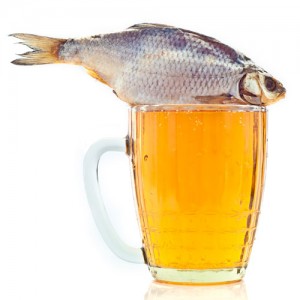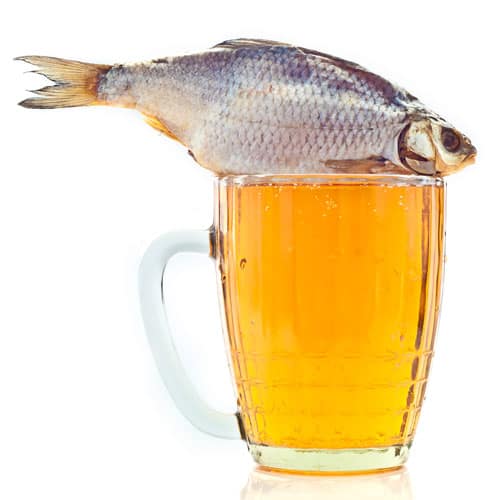
There are a number of pitfalls that can plague any brewer. Anything from a stalled fermentation to a stuck sparge to a shattered carboy can rear their ugly heads to ruin your day. Luckily for us most of these troubles can be overcome, generally with only minor effort.
Each month I’ll do a write-up of some standard brewing problems and how to best address them. I’ll start off today with one of the most common problems; the aforementioned stalled fermentation. This problem is common enough and has enough possible suspects that today’s post will be devoted entirely to defeating it. Here’s the setup;
The airlock in my fermenter stopped bubbling way too early, it’s only been a short time and there’s no way it should be done yet. Did I kill my beer?
Probably not. Stalled fermentations are a pain, but they can usually be overcome without too much extra effort. This problem could have many different root causes; yeast activity is complex so there’s a few things we need to check. But first, let’s make sure it really is stalled.
You do have a brew book right? Go back and find your entry for the batch in question, and find out what your expected FG should be. Now take a measurement and compare. If it’s within a few points (1.009 when it should be 1.005), call it a day and call it done. Congratulations. This isn’t likely, but with a small beer or a session beer, it’s possible that your beer fermented extra fast. But let’s be realistic and say it’s way off, like by 20 points or more. Calm down for a second, drink a beer, and check again in a few days. A few days, not in five minutes, and not tomorrow. If your beer is stalled it’ll be fine waiting, and if it’s not you’ll just cause problems by poking at it too much.
If your gravity keeps dropping, leave it alone until it stops. For lack of a better word, occasionally fermentation is a little subtle, and lack of a violent string of bubbles isn’t a big deal. But let’s assume your fermentation really is stalled, and your gravity is way too high, what next? Well, what temperature is your fermentation room? Temperature control is key to happy yeast. If your room is too hot, your fermentation will start out huge, but quickly short circuit. If it’s cold, your yeast will go dormant early (this, of course, doesn’t apply nearly as much if you’re lagering).
The solution to either of these problems is to move your beer to a better room, or to futz with the thermostat until the room you’re in gets to a good beer temperature. Hopefully you have one of those thermometer stickers on your fermenter so you can really monitor the temp well. Once you’ve fixed your temperature problems, it’s time to pitch more yeast. Since you can’t aerate your beer anymore (avoid air exposure as much as possible after brew day, that actually could be a death sentence), make a big yeast starter (learn how to make a yeast starter here) to ensure you kickstart your fermentation back into gear. This is especially important if your beer was too hot. At higher temperatures, yeast produces more unwanted by-products into your beer. Some of this is redigestable by healthy yeast, so to reduce any nasties in your batch, be sure to hit it with a good quantity.
But what if temperature isn’t your problem? What if the beer is sitting right at 70 degrees and you still have unfinished beer? Maybe you pitched a bad batch of yeast. Unhealthy, or just plain not enough yeast is a great problem to have because it’s an easy problem to fix. Just get some more yeast in there. Again, using a starter is a great way to go.
The last problem you might have is a beer that is too strong. Most beer yeast can’t survive when the alcohol content gets too high (which makes a little bit of sense if you think about it. I mean, essentially the yeast is just sitting in its own waste, which I wouldn’t be happy about either). Most high gravity beers will be just fine as long as you pitch a whole bunch of yeast, so again the problem could be fixed by adding more (see a pattern yet?). If you’re really pushing the envelope you’ll have to get creative; some big beer brewers use champagne yeast, and if you’re going really high, White Labs has developed a specialty yeast that can survive living in an alcohol content up to 25%.
Now the bad news, if you’ve tried the above steps with no success maybe you did kill your beer, and I probably know why. Sanitation. Bad sanitation will kill your yeast nine times out of ten. It’s a big deal. So if you just can’t save your beer, dump it out and chalk it up to experience. Next time you’ll know to pay closer attention to your sanitation. Make sure you sanitize everything, and I mean everything, that could possibly come into contact with your beer, and I’m sure you’ll do fine next time. Our favorite sanitizer is Star San, which is a no rinse sanitizer perfect for homebrewing.
Happy Brewing.


5